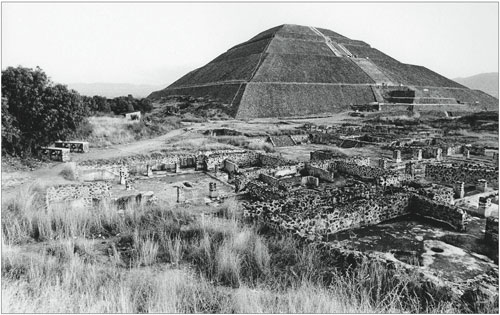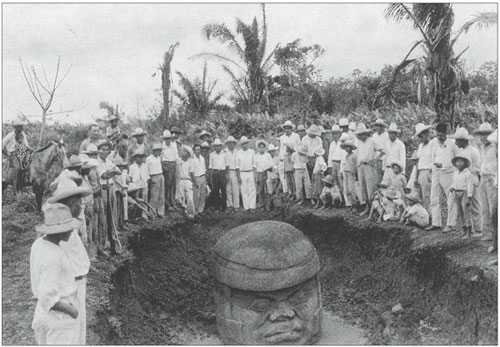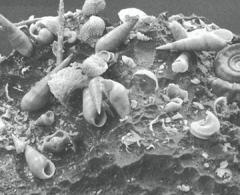
This Article From Issue
July-August 2006
Volume 94, Number 4
Page 360
DOI: 10.1511/2006.60.360
1491: New Revelations of the Americas Before Columbus. Charles C. Mann. xii + 465 pp. Alfred A. Knopf, 2005. $40.
It is a rare textbook on world history that does not begin its account of the past in the Western Hemisphere with the European invasion that took place soon after the arrival of Christopher Columbus in 1492. Almost all of the achievements of Pre-Columbian cultures and civilizations have been systematically neglected or depreciated by most Western-oriented scholars. How was it that small bands of gold-hungry conquistadores could have defeated the armies of empires with populations that numbered in the millions? Was much of North America an almost empty land waiting to be developed by more advanced colonists?
In his ambitious new book, 1491, accomplished science writer Charles C. Mann provides answers to such questions and poses many more that have been raised by recent anthropological and archaeological research. He concludes that in 1491 the Western Hemisphere was (as it had been throughout much of its long history) "a thriving, stunningly diverse place, a tumult of languages, trade, and culture, a region where tens of millions of people loved and hated and worshipped as people do everywhere." Of course, to archaeologists and historians of Andean and Mesoamerican civilizations, such as the Inca, Maya and Aztec, there is nothing particularly new or controversial in this statement—we have long appreciated the accomplishments and demographic size of these peoples. But what is new is Mann's revisionist view of regions that have long been thought of as lightly populated backwaters, far removed from the centers that were supposedly more civilized, such as the Amazon and the eastern United States.

From 1491.
Mann says he had three main foci when writing this book: Indian demography, Indian origins and Indian ecology. (In an interesting appendix, he explains why he uses the word "Indian" to describe the hemisphere's indigenous peoples, a choice that fits with my own observation that American Indian friends of mine prefer "Indian" or "Indian people" to "Native American," which to them smacks of white paternalism and political correctness.) Mann has done an enormous amount of research, and although he wears his learning lightly, most of what he says is backed up by extensive endnotes and an enormous bibliography. And what is more important, he has taken the trouble to visit the regions he is writing about and to interview the principal scholars who have produced what he calls "new revelations." He is fully aware of the controversies and rivalries that have long been rife in this field, and it is quite clear that although he usually gives both sides of a scholarly dispute, he is not shy about revealing which side he favors.
This is particularly true with his treatment of New World origins, or what some have called the "Paleo-Indian" stage or period. Here the "fall guys" are University of Arizona archaeologist C. Vance Haynes and his allies, who have long championed the idea that the first Americans were the Clovis people, who arrived via a land bridge from Siberia roughly 12,000 years ago and in short order hunted much of the New World's big game to extinction. This school has maintained a steady skepticism about claims that there are "Paleo-Indian" sites dating to more than 12,000 or 13,000 years ago, in the face of mounting archaeological, linguistic and biological evidence that the first migrants into the hemisphere could have arrived, possibly on coast-hugging boats, as many as 15,000 or even 20,000 years ago. Here I must say that, like Mann, I accept the argument that humans were in the Americas before the Clovis hunters arrived.

From 1491.
By far the most interesting parts of the book are concerned with the Amazon and Orinoco basins. When I was a graduate student, the accepted wisdom about the tropical-forest peoples of South America was that they consisted of little more than small bands and tribes of immigrant Andeans, demoted from a previously civilized state to a simple slash-and-burn farming existence by finding themselves in an extremely limiting environment—a view that was enshrined in the third volume of the authoritative Handbook of South American Indians. This hypothesis is one that has long been espoused by another of Mann's "fall guys"—the Smithsonian's Betty J. Meggers, who is a pioneer of Amazonian archaeology, as was her late husband, Clifford Evans.
Mann cites a vast amount of evidence that it cannot always have been the case that only small groups lived in those forests, because the very first Europeans to explore the Amazon saw extensive towns along the river systems, with very large populations. Centuries later, the agriculturalists and hunters in the Amazon and Orinoco described by anthropologists are only the tattered survivors of the great demographic disaster that struck all of the hemisphere's indigenous peoples with the introduction of European epidemic diseases such as smallpox and measles. Testifying to their vanished complexity are the extensive raised-field patterns that can be seen from the air in the now-denuded Beni region of eastern Bolivia and in the densely occupied towns of the Marajoara culture, which flourished for almost a millennium on a huge island in the mouth of the Amazon.
As Mann argues, we can now view the early Indians of the Americas not as prisoners of their environment but as managers of it. This was as true of South America as it was of Mesoamerica and North America. For instance, 250 years ago vast flocks of passenger pigeons flourished in North America, yet their bones are not often found in sites dating to a time before the arrival of Europeans. The only explanation can be that large Indian farming populations kept these competing seed-eaters scarce through deliberate extirpation, because once the Indians had been decimated by disease, the pigeon population exploded.
It must be remembered that Mann is a journalist, and an advocate journalist at that. This leads him to make claims that may be overenthusiastic, for surely the South American forest that we see now (or what remains of it) cannot have been totally managed by humans, nor were Indians of the hemisphere always winners in managing their environment—there are abundant data to show that the Classic Maya greatly overexploited theirs, leading to the great collapse of the 9th century a.d. Mann also has a tendency to believe the last scholar he interviewed. Regarding Mesoamerica, he entirely accepts the downgrading of the Olmec from their status as the earliest civilization and mother culture of Mesoamerica to being just one of a number of "sister cultures." But few specialists who have actually excavated Olmec sites (including me) would agree with this. Likewise, he uncritically believes that the so-called "epi-Olmec" script of southern Veracruz has been deciphered, a view that most Mesoamerican epigraphers have, in fact, rejected.
Reading 1491, one soon learns about the horrifying devastation that Old World diseases worked throughout the New World. This was the greatest demographic disaster ever suffered by Homo sapiens. In Mesoamerica alone, only 10 percent of the Indian population was alive a century after the Conquest. As Jared Diamond has made clear in his justly renowned Guns, Germs, and Steel, these scourges ran ahead of the European invaders, so that the seeds of defeat were already planted in empires like the Aztec and Inca even before the conquistadores arrived.
One wonders what would have happened had the Indians not been almost totally lacking in immunity to these plagues. Would they, like the enormous populations of India, have managed to throw off the European yoke after only a few centuries? Would there now be Maya, Aztec or Inca states in the United Nations General Assembly? Would the Conquest ever even have taken place?
Mann has written an impressive and highly readable book. Even though one can disagree with some of his inferences from the data, he does give both sides of the most important arguments. 1491 is a fitting tribute to those Indians, present and past, whose cause he is championing.

American Scientist Comments and Discussion
To discuss our articles or comment on them, please share them and tag American Scientist on social media platforms. Here are links to our profiles on Twitter, Facebook, and LinkedIn.
If we re-share your post, we will moderate comments/discussion following our comments policy.